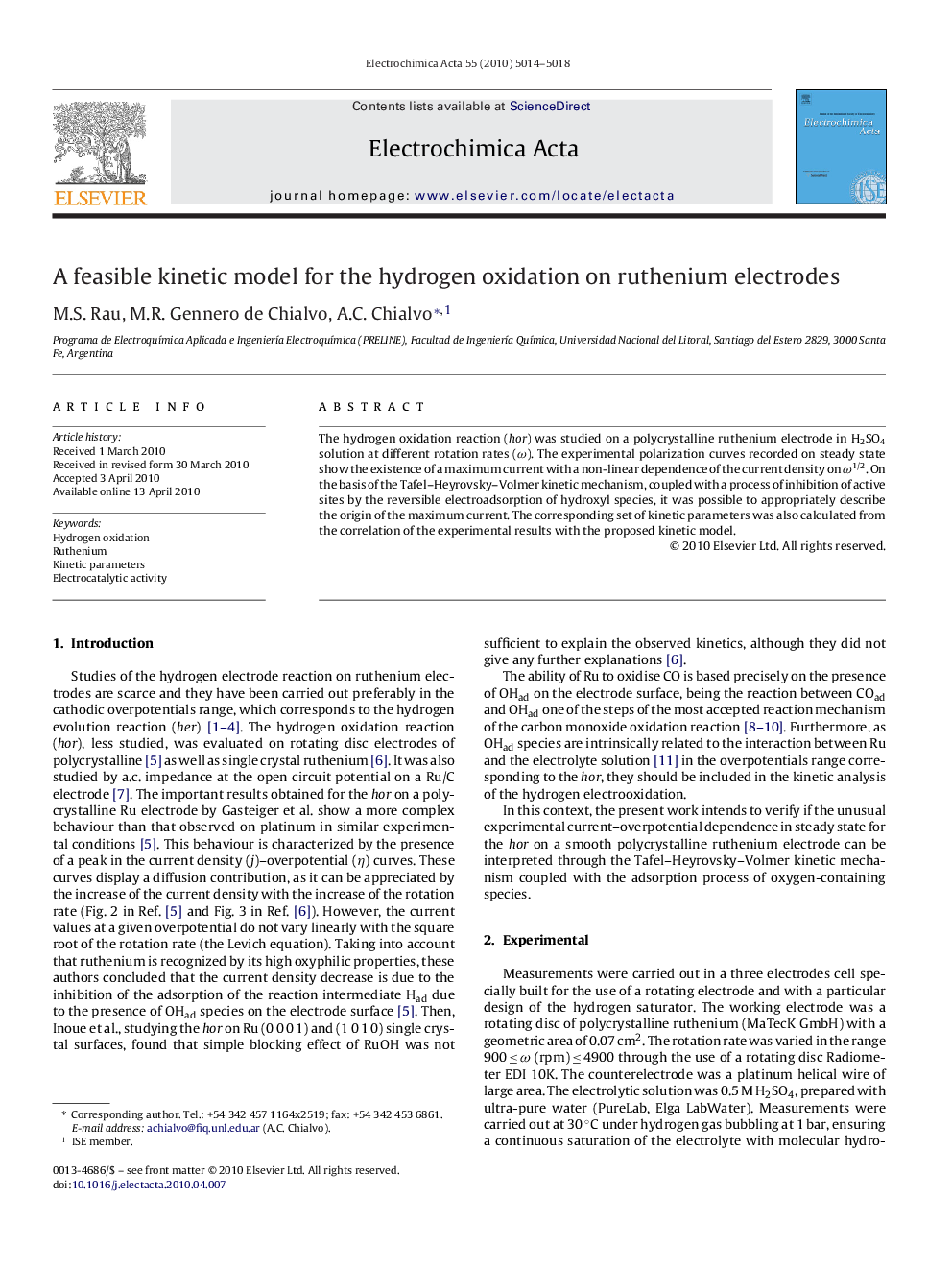| Article ID | Journal | Published Year | Pages | File Type |
|---|---|---|---|---|
| 190579 | Electrochimica Acta | 2010 | 5 Pages |
Abstract
The hydrogen oxidation reaction (hor) was studied on a polycrystalline ruthenium electrode in H2SO4 solution at different rotation rates (ω). The experimental polarization curves recorded on steady state show the existence of a maximum current with a non-linear dependence of the current density on ω1/2. On the basis of the Tafel–Heyrovsky–Volmer kinetic mechanism, coupled with a process of inhibition of active sites by the reversible electroadsorption of hydroxyl species, it was possible to appropriately describe the origin of the maximum current. The corresponding set of kinetic parameters was also calculated from the correlation of the experimental results with the proposed kinetic model.
Related Topics
Physical Sciences and Engineering
Chemical Engineering
Chemical Engineering (General)
Authors
M.S. Rau, M.R. Gennero de Chialvo, A.C. Chialvo,
